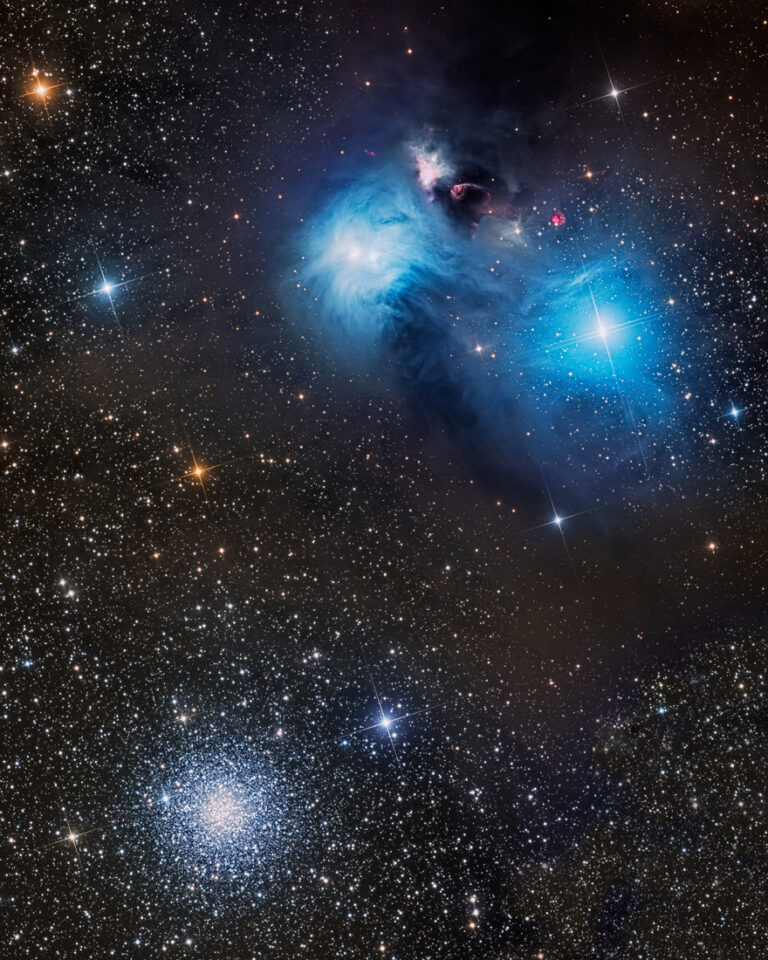南冕座的恒星和尘埃
2023年6月22日 Stars and Dust across Corona Australis Image Credit & Copyright: Alessandro Cipolat Bares Explanation: Cosmic dust clouds cross a rich field of stars in this telescopic vista near the northern boundary of Corona Australis, the Southern Crown. Part of a sprawling molecular cloud complex this star forming region is a mere 500 light-years away. That’s about one third the distance of the more famous stellar nursery known as the Orion Nebula. The 2 degree wide frame would span 15 light-years at the clouds’ estimated distance. Mixed with bright nebulosities the dust clouds effectively block light from more distant background stars in the Milky Way and obscure from view embedded stars still in the process of formation. Large dark nebula Bernes 157 is on the…



